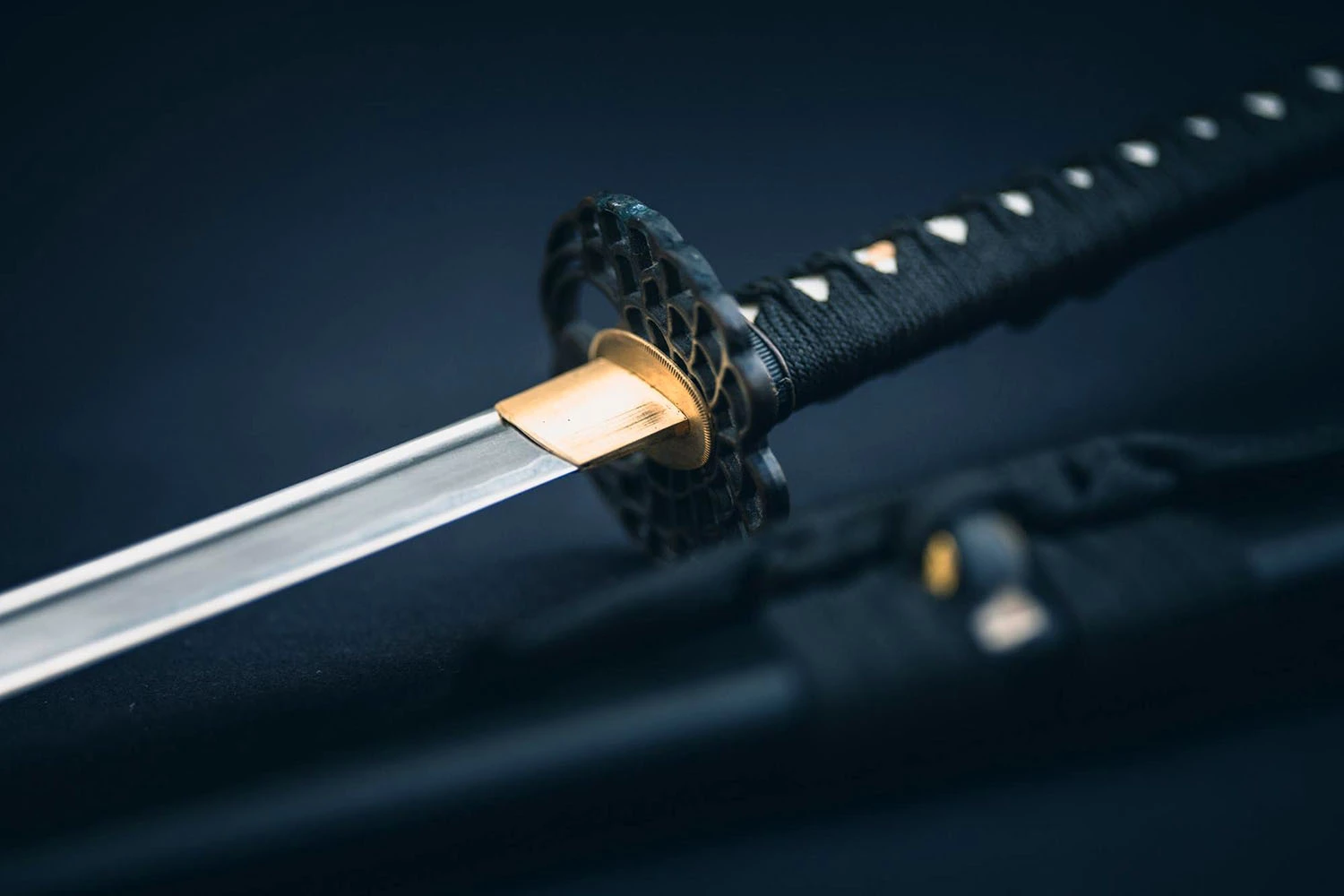Swords play a big role in Japanese culture and history. Known for their unique designs and meanings, they have a wide range of appeal. Despite the popularity of the katana as a symbol of Japanese swords, not all Japanese swords are katanas.
In this guide, we will examine Japanese swords’ different types, characteristics, and cultural significance. We aim to understand more about these swords, including how they are made and what they mean to the Japanese. So, let’s stroll through Japanese swords and see what makes them special beyond katanas.
Understanding the Types of Japanese Swords
Japanese swords come in various shapes and sizes, each having its distinctive features and how it feels and performs. Let’s take a look at each sword.
Tachi
Samurai used the tachi, a sword with its edge facing downwards, while mounted on horses. It is an elder relative of the katana. In contrast to the katana, it has a more prominent curve.
This curvature is adapted to meet the needs of mounted warriors to maximise the effectiveness of mounted strikes.
Japanese swordcraft evolved and adapted to suit various battle scenarios through the tachi, a precursor to the katana.
Wakizashi
Shorter than the katana, the wakizashi shares some of the same looks as the latter but is smaller. A traditional method of working with the katana is daisho, where the two swords work together.
As part of the culture of the samurai, this combo plays an important role. Despite its shorter length than the katana, the wakizashi has a lot of value. When it comes to close combat, it holds its importance. Samurai culture and spirit are at the core of this samurai way of using two swords.
Katana
Katanas are well-known Japanese swords with curved, slender, and single-edged blades, which carry important cultural meanings. Samurai, the respected warriors of Japan, wore it as a symbol of discipline, honour, and loyalty.
It reflects not only its physical characteristics but also the samurai’s way of life with its ability to make precise and quick strikes. A skilled user can use a katana to represent tradition, skill, and Japan’s rich cultural history.
Katanas are characterized by a curved, slender, and single-edged blade that facilitates quick and accurate striking. Katana for sale are made using tamahagane steel through a folding and differential hardening.
It enhances the blade’s sharpness and strength, giving it a unique appearance. Forging techniques and tamahagane steel contribute to the katana’s historical importance and revered status.
Nodachi/Odachi
Like a long katana, the nodachi, or odachi, is used in battles for specific purposes, especially with cavalry. It gives foot soldiers an advantage in certain fights because it’s longer.
Nodachis are larger and serve a specific purpose, unlike katanas, which are more flexible and quick. Nodachi, like everything else in Japanese sword history, has its important role in adapting to the battlefield.
Tanto
These swords both have shorter, thicker blades that work well for slashing. Tanto swords are forged through a heat-intensive process. A blade is shaped by heating and hammering the chosen steel. Steel from specific regions, often highly quality, is a critical component.
The choice of steel impacts the blade’s strength, sharpness, and overall performance. These are often used in ceremonies and have a fancy appearance. Japan has a long history with these small swords, both practical and artistic.
Conclusion
Finally, Japanese swords are fascinating because there’s more to them than just the famous katana. Every type has features, history, and function, such as the tachi, wakizashi, Tanto, and nodachi/odachi.
The different styles of these swords provide insight into how Japanese sword-making has changed over time and why they’re so important. They’re timeless and connect us to the past, whether they mean honour, self-defence, or showing off amazing art skills.




